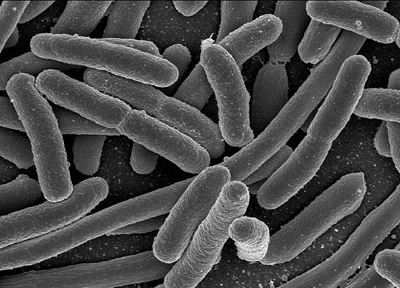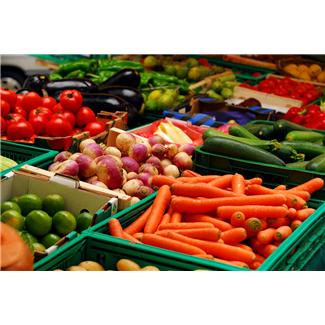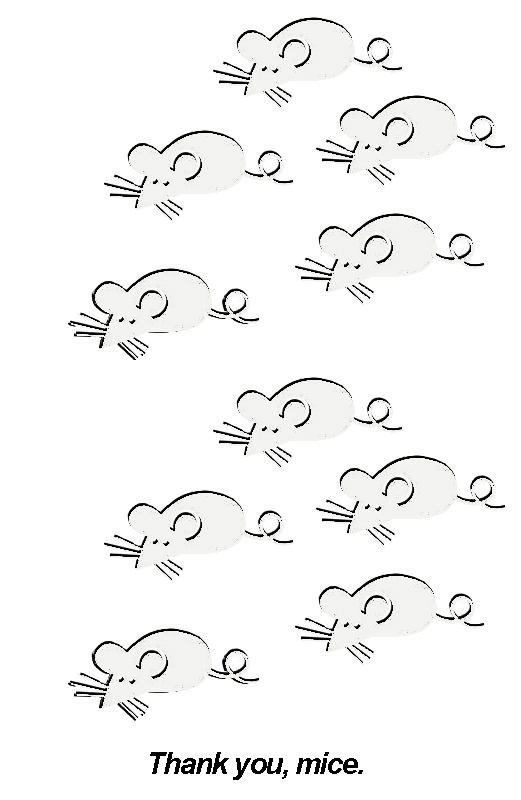Can Gut Microbes Help With Weight Loss?
CAN GUT MICROBES HELP WITH WEIGHT LOSS? (ISSUE 94)
By Diane Gold
There is extremely specific evidence that gut microbes have something to do with weight loss or gain. Much research is in process, and a new, amazing breakthrough has just been published.
THE STUDY
 On September 5, a new study came out in the journal, Science, where germ-free mice were colonized with gut microbes (called “microbiota” in the study itself) from four pair of human twins. Each pair of twin donors contained one obese and one thin human. The recipients of the fecal matter were sterile mice who had no gut microbes until they were exposed to the human microbes.
On September 5, a new study came out in the journal, Science, where germ-free mice were colonized with gut microbes (called “microbiota” in the study itself) from four pair of human twins. Each pair of twin donors contained one obese and one thin human. The recipients of the fecal matter were sterile mice who had no gut microbes until they were exposed to the human microbes.
Those mice who received the transplanted material from the obese twin became obese. The mice who received the transplanted material from the thin twin became thin. The mice were genetically identical so as to rule out genetic differences.
So far, this research, in its early stages, shows much promise. Not only did it show that the obese donors’ gut matter with controlled diet affected the recipient mice to get obese and vice versa. A big conclusion came out of this: it might be possible to change out microorganisms in an obese person’s gut so that the new microbes could promote thinness rather than obesity.

The researchers fed the mice a low-fat diet, which regular mouse food is. The microbes from the lean twin took over the gut of a mouse that already had microbes from the obese twin. The overweight mouse started to lose weight. The microbes from the overweight twin did not take over in a mouse that was thin.
NEXT STEP
Dr. Jeffrey I. Gordon, the senior researcher on the study, from Washington University in St. Louis, called the collection of microbes the “Battle of the Microbiota.” This is what happened.
After the transplants, the mice from each set of microbes, both obese and thin, were put together in the same cage. Mice typically eat each other’s dropping. So both sets of gut microbes were shared, and the mice with obese donor microbes started converting to the microbes from the mice from thin donors. There were sterile mice also introduced into the cages to see which microbes would appear in the gut of the sterile mice. The thin microbes seemed to take over.
One of the research colleagues, Vanessa K. Ridaura came up with the idea of creating two different diets for the mice, based on a national survey of what Americans eat: a high-fat diet with saturated fats and a low-fat diet with the most fruits and vegetables diet. The researchers created mouse pellets of two compositions to reflect these two types of diets. What they found was the mice who were overweight and received food high in fat, low in fruits and vegetables, stayed overweight and kept the gut microbes from their obese human. The thin twin’s gut microbes took over only when the mice were fed the food rich in fruits and vegetables and low in fat.
This study parallels the science that shows how low fat and high fruits and veggies are good for you.
FUTURE WORK
Dr. Gordon has said he wants to search out which particular microbes are responsible for the effect on obesity and leanness so that, eventually, people can be given microbes instead of fecal matter. A gastroenterologist, not part of the study, Dr. Alexander Khoruts, University of Minnesota, mentions how this isolating “the” microbe could take decades. He mentions that it would be a lot quicker to try fecal transplants.
To date, just under 500 fecal transplants have been reported for very aggressive clostridium difficile infection with successful results in over 90% of the cases. For obesity therapy, the prospects are hopeful. It seems like the simplest, least expensive, least invasive therapy to date.
NOMENCLATURE
When the study came out two days ago, the New York Times, the paper whose Sunday crossword puzzle my mother could get through without much effort, writer Gina Kolata, used the words “Gut Bacteria” in the headline. Enjoying using the right language, I started this mad dash to check what to call the microbes in our intestine (did you know these biological helpers are also in our conjunctiva [the eyelid inner skin], on and under our skin and in the mucous membrane [in the mouth, nose, gut]?), and I wondered whether this study used bacteria exclusively. Now I know it was a combination of whatever was in the stool.

Phylogenetic Tree Of Life
I kept seeing the words “gut flora” in the brilliant encapsulation with the same title in Wikipedia, also in the L.A. Times’ rendition of the study which was published on the same day and in various other publications. I was confused because I had always used the words that distinguish plants from animals, flora from fauna, by thinking of Bambi, the fawn. Faun, get it? So, to my knowledge, flora was plant matter.
It turns out the words “gut flora” when speaking about our intestinal microorganisms is used although it is phasing out to the correct microbiota, “biota” pertaining to the diverse collection of “micro” or tiny organisms. Flora was probably begun to differentiate the microbes from the exclusive word “bacteria” which would leave out fungi and archaea, other microbes that live in the gut and help us thrive. The New York Times article used the limiting word, “bacteria,” in this article.
CONCLUSION
We are influenced heavily by what we eat. Now we have more proof than we used to that gut microbes have influence on the proteins produced and the processes that contribute to our weight and our appetite. It is important to be thoughtful of what the food we eat does to support or inhibit our bodies and to make changes accordingly.
Here are a few easy steps we might take to protect our gut microbes. Imagine if weight loss were only a matter of balancing our gut microbes, as may be. It seems correct since these microorganisms have so many productive jobs to keep our body functions optimal.
ACTION STEPS

1) Make more than half the food you eat fruits and vegetables.
2) Experiment with ingredients in a salad or vegan nori rolls, so quick and nutritious.

3) Do a few seconds of abdomen circles every day to assist with digestive flow.
4) Notice how food affects your body, and be good to it. Your bathroom visits will be regular and smell mild if the body appreciates the way you eat. The more vegetables, the better. They nourish and cleanse.
5) Consider making one new food choice, and commit to it for a week. If you do not feel better or if you get bored, let it go, and make another food improvement. If you do feel better, continue it for another two weeks. If you still feel good, keep the change.
EPILOGUE
These steps are the beginning of changing any habit so that your gut microorganisms can make you strong and healthy. Time will tell about how powerful are the findings in the above scientific breakthrough study.
Wouldn’t it be tremendous if this non-debilitating method of achieving better health could be made available to all who need it!
____________________________________________________________________
FEEDBACK
Please leave a comment and LIKE.
DIANE GOLD, AUTHOR
Diane Gold, Founder of Warriors of Weight, Turning Habits Into Health, is a mentor in tai chi, kung fu and meditation, a music, fitness and stress expert, dedicated mom, studying plant-based nutrition and habit change.
She looks for the latest research techniques that can help people curb cravings. There are so many keys to health that are right in front of us. She says,
“The current science about our own microorganisms in our gastrointestinal tract is vast and growing. It makes sense to me that we can use this micro eco system within ourselves for balance. I hadn’t considered that we could offer each other our good microbes for health, but it’s so logical.
“The ease with which this therapy could help people all over the world is remarkable. I am very excited and await more gut microbe news.”








